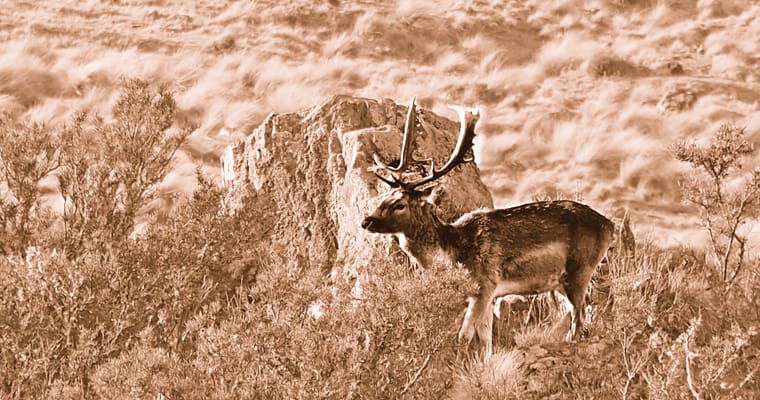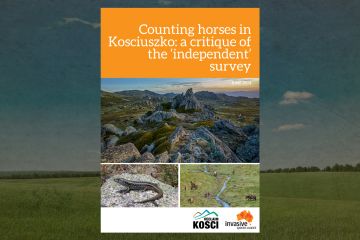It’s hard to believe but right now Tasmania treats feral deer as partly protected wildlife.
The Tasmanian Government hasn’t woken up to the fact it is 2021, not 1841, and that it has a serious feral deer issue on its hands. One that is beginning to threaten one of Australia’s most treasured wild places, the Tasmanian Wilderness World Heritage Area, home to such iconic destinations as the Walls of Jerusalem and Cradle Mountain national parks.
Can you join us and call on the Tasmanian Government to remove the partly protected status of feral deer so that we can start managing their numbers in a way that keeps deer out of the Wilderness World Heritage Area and other high value conservation areas and protects Tasmanian agriculture?
Land owners and land managers need to get on with control without being hindered by red tape and regulation.
All you need to do is make a submission to the current Wildlife Regulations Review, including some key dot points we’ve outlined below.
Submissions need to be in by 30 September 2021 and can be emailed to NaturalHeritage.Policy@dpipwe.tas.gov.au
How to make a submission
If you care about the impacts of feral deer on Tasmania’s wilderness, wildlife, farmers, Aboriginal cultural heritage, community amenity and safety please make a submission to the Wildlife Regulations Review.
Email: NaturalHeritage.Policy@dpipwe.tas.gov.au
Subject line: Wildlife Regulations Review
Deadline: 30 September 2021
We suggest you make the following points in your submission. It is also important to put down in your own words why you believe deer should not be considered partly protected wildlife under Tasmania’s Nature Conservation (Wildlife) Regulations 2021.
Key points to make in your submission
- Tasmania’s feral deer population now numbers up to 100,000, occupying more than 2 million hectares of the state. Climate and habitat suitability modelling predicts that 56% of Tasmania could be inhabited by fallow deer and the population will be more than one million by 2050.
- The result of the “Partly Protected” status of feral deer has hindered reduction of deer numbers and led to a 11.5% annual increase of the feral deer population.
- Farmers, conservationists, rural land owners, Aboriginal Tasmanians and rural community members are exasperated by the worsening impacts of feral deer.
- Deer must be no longer be considered partly protected wildlife under the Nature Conservation (Wildlife) Regulations 2021 and as such deer must be removed from Section 3 (Interpretation) of Regulations and European Fallow Deer removed from Schedule 8 where they are prescribed as partly protected wildlife. This will allow feral deer to be managed as a pest species under Tasmania’s Biosecurity Act (2019).
- All species of deer are to be prescribed Restricted Animals and as such listed in Schedule 9 of the Nature Conservation (Wildlife) Regulations 2021 to make it a serious offence to import any species of deer to Tasmania.
Send your submission to:
- NaturalHeritage.Policy@dpipwe.tas.gov.au
Or by Mail:
Section Head (Policy and Projects Section)
Natural and Cultural Heritage
GPO Box 44
HOBART TAS 7001
To learn more about why Tasmania needs to manage deer as a pest animal read our report Feral Deer Control: A Strategy for Tasmania.
Please also make these key points about deer farms
Please also ask the Tasmanian Government to better regulate deer farms. We suggest you add these key points to your submission:
- In Tasmania deer escaping from deer farms has led to the establishment of new feral deer herds in areas previously free of this destructive, introduced animal.
- There needs to be a strict requirement for deer on farms to be tagged and recorded and severe and enforceable penalties for escaped deer.
- There needs to be provision for stronger fencing standards, closing down deer farms if they pose a threat of deer escaping and strict conditions on the sale and disposal of live farmed deer.
- No new deer farms should be allowed outside the “traditional deer range”.
Send your submission to:
- NaturalHeritage.Policy@dpipwe.tas.gov.au
Or by Mail:
Section Head (Policy and Projects Section)
Natural and Cultural Heritage
GPO Box 44
HOBART TAS 7001




